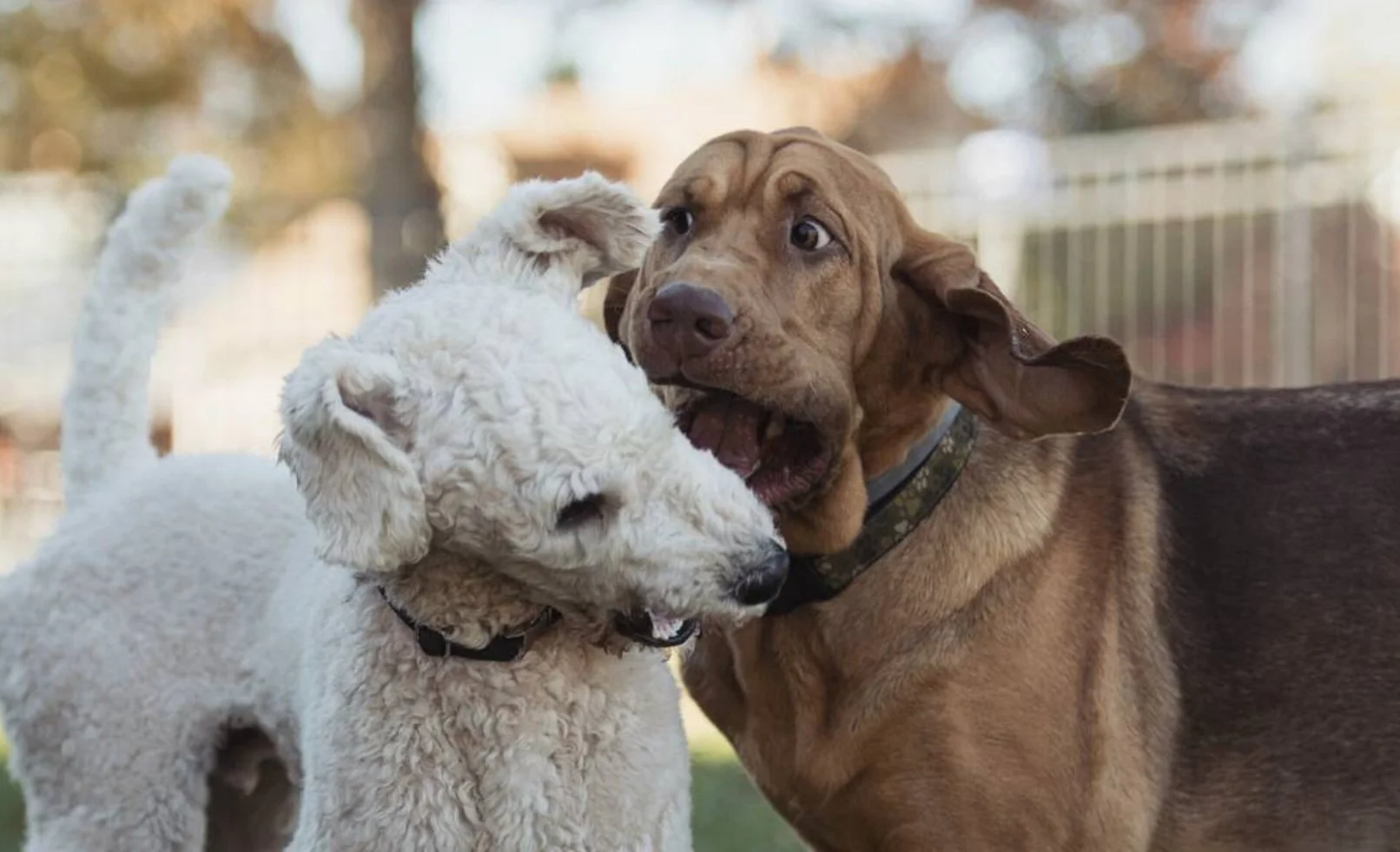So your dogs fought, now what?
So Your Dogs Fought — Now What?
By Fetch Happens K9 | Balanced Dog Training & Behavior Support
When your dogs fight, it’s terrifying- even if no one’s seriously hurt. You might be wondering why it happened and what to do next. The truth is, fights between household dogs are more common than you think, and how you respond in the hours and days after makes all the difference.
This guide covers what to do immediately after a dog fight, how to safely separate dogs, and how to prevent future conflicts.
1. Check for Injuries Immediately
First priority: safety and assessment.
Once the dogs are separated, take a breath and look everyone over- including yourself. Even minor bites can turn serious fast. Don’t assume “no blood” means “no problem.”
Look for:
Puncture wounds or bleeding (especially hidden under fur)
Limping or stiffness
Excessive panting, trembling, or whining
Lethargy or low energy
Swelling or heat under the skin
Loss of balance or coordination
Reluctance to move, eat, or drink
If you see any of the above, or you’re unsure, contact your vet. Internal injuries, shock, and infection can develop quickly after a dog fight. When in doubt, get a professional exam.
2. Separate Dogs Safely (Crate and Rotate)
Once you’ve confirmed there are no emergency injuries, it’s time to separate the dogs completely. It’s okay if they can still see each other, but they should not have physical access to each other until you’ve made a plan to prevent fights in the future. Adrenaline from a fight can last 24–48 hours, and tension can flare up again in seconds.
Use a crate and rotate system:
One dog is out while the other is in a crate or closed room.
They switch on a schedule for potty breaks, play, and rest.
Avoid any direct, face to face contact until both dogs are calm for days at a time.
This gives everyone space to decompress and prevents another incident while emotions settle.
3. Remove Shared Resources
Dog fights often stem from resource guarding — over food, toys, bones, or attention. Even if the fight seemed “random,” it’s safest to remove all potential triggers.
Pick up:
Toys, bones, and chews
Food bowls after meals
Shared beds or blankets
Access to sofas and human beds (even if just temporarily while tensions are high)
Anything they’ve competed for in the past
For now, feed and train the dogs separately. Once reintroductions begin, you’ll reintroduce resources gradually and under guidance.
4. Observe and Reflect
After things calm down, take time to analyze what happened. Dog fights are rarely “out of nowhere.” Often there are subtle warnings — tension, hard stares, blocking doorways, or stiffness around valued spaces.
Ask yourself:
Has there been recent stress (new dog, move, guests, health or routine change)?
Were they overstimulated from play or visitors?
Did one or both dogs show resource guarding or frustration signs?
Have there been previous scuffles or “near misses”?
Writing down the sequence of events helps your trainer identify triggers and patterns.
SEO Keywords: why do dogs fight, dog behavior after fight, dog body language before fight
5. Don’t Rush Reintroduction
It’s natural to want things “back to normal,” but moving too fast is the biggest mistake owners make.
Reintroduction should be structured and gradual — ideally guided by a professional trainer experienced in multi-dog households.
Start with:
Parallel walks with distance
Tether or crate time near each other
Neutral territory sessions
Controlled leash dragging greetings in a secure, outdoor area (only when calm and ready)
If either dog tenses, growls, or fixates, back up. Go slower. Safety and emotional reset come first. If the fight resulted in broken skin, either dog attempted to bite you in the process, if there are children in the home, or if there are any other safety concerns- it’s imperative to contact a trainer. Dog bites and fighting are often progressive and can become a bigger problem the more the dogs rehearse, or keep practicing the behavior. In less jargon-y terms, the more your dogs fight, the more they’ll have beef long term.
6. Rebuild Structure and Routine
After a fight, dogs need predictability. Re-establish rules that create calm and confidence:
Structured feeding and walks
Doorway control and leash management
No unsupervised interactions
Calm obedience or place work indoors
The clearer the structure, the safer both dogs will feel. If each dog follows consistent, clear guidance, they will both feel safer around each other.
7. Get Professional Help
If your dogs have fought once, the chances of it happening again are higher. That doesn’t mean they can’t coexist — but it does mean you’ll need expert help to rebuild safely.
A balanced dog trainer or behavior consultant can help you identify triggers, rebuild leadership, and set up a sustainable management plan. Don’t wait until it happens again.
Final Thoughts
Dog fights are traumatic, but they don’t define your dogs. With safety, structure, and expert guidance, many households return to peace and stability.
At Fetch Happens K9, we help owners navigate real-life behavior issues- not just obedience cues. If your dogs have fought, don’t wait for it to happen again. Let’s build a plan that restores safety and confidence for everyone.
Contact us to schedule a consultation or in-home behavior assessment.


